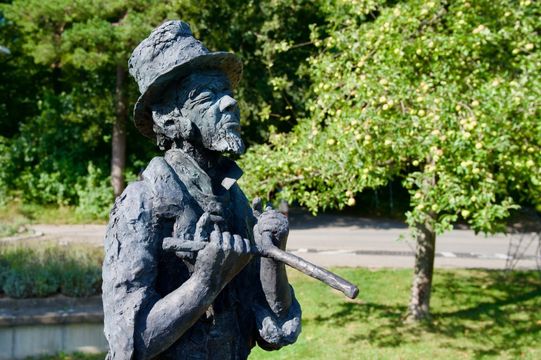Irish Leprechaun: Mysteries and Legends of the Little Emerald Creatures

Origins of Irish Leprechauns
Irish leprechauns, known as "leprechauns" in English, have their roots in Celtic folklore. The word "leprechaun" derives from the Gaelic "leipreachán", meaning "dwarf". These small creatures were first mentioned in medieval Irish stories and were associated with the land, forests and waterways.
According to legend, Irish leprechauns are the guardians of hidden treasures, often buried in cauldrons of gold. They are renowned for their skill in forging and working with metal, especially gold. This association with wealth helped shape their image as mischievous creatures, jealously protecting their precious possessions.
Characteristics of Irish Leprechauns
Irish leprechauns are generally described as small figures, usually less than a meter tall. They wear traditional green clothing, which blends in perfectly with Ireland's lush nature. Leprechauns often have an aging appearance, sporting beards and pointy hats.
One of the most notable characteristics of Irish leprechauns is their passion for shoes. They are often depicted as talented shoemakers, spending their time making fine, delicate shoes. It is said that each leprechaun has an apron of cobbler's tools, which he carries in a pocket.
Leprechauns in Literature and Popular Culture
Irish leprechauns have left their mark on literature and popular culture. They have appeared in literary works, plays, songs and stories throughout the ages. One of the most famous stories featuring an Irish leprechaun is the play "Finian's Rainbow" by EY Harburg and Fred Saidy, which was made into a film in 1968 .
Irish leprechauns have also become an iconic symbol of Ireland, associated with luck and fortune. The symbols of three-leaf clover and cauldrons of gold are often used to represent these mythical creatures.
Leprechauns in Irish Mythology
Irish leprechauns are closely linked to Irish mythology. They are often associated with the Tuatha Dé Danann, a divine race said to have ruled Ireland before the arrival of the Celts. Some accounts say that the Irish leprechauns were members of the Tuatha Dé Danann who took refuge in the hills and forests after their defeat by the Celts.
In Irish mythology, leprechauns are also associated with deceptive activities. They are known to play tricks on lost travelers, leading them to mysterious places and confusing them with illusions. These teasing escapades fueled popular belief in their mischievous nature.
The Leprechaun and the Three Leaf Clover
The most famous symbol associated with Irish leprechauns is the three-leaf clover. Leprechauns are said to use this plant to hide from humans. If you find a three-leaf clover, it is believed to bring you luck and protect you from leprechauns.
According to legend, every Irish leprechaun has a four-leaf clover in his pocket. This magical clover allows him to become invisible. If a human manages to capture a leprechaun, the latter must grant him three wishes in exchange for his freedom.
The Leprechauns and St. Patrick's Day
St. Patrick's Day is the perfect time to celebrate Irish culture, including leprechauns. St. Patrick's Day parades around the world are often accompanied by depictions of Irish leprechauns, shamrock symbols and cauldrons of gold. The celebrations also include the tradition of wearing green, a color associated with luck and wealth, which evokes the enchanted world of leprechauns.
Conclusion
Irish leprechauns, these mysterious creatures with a mischievous character, are an essential part of the rich Irish folk tradition. Their history, characteristics and role in Irish culture make them an important part of the Emerald Isle's heritage. So, next time you're wandering the Irish countryside, keep an eye out for these little guardians of hidden treasures, and maybe you'll be lucky enough to cross paths with an Irish leprechaun. After all, who knows what surprise the three-leaf clover might have in store for you?